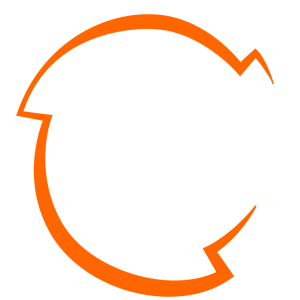
Today interpreting, anticipating and answering people’s requests in advance is becoming more and more complex. According to researchers B. Joseph Pine and James H. Gilmore we find ourselves faced with a new question, that goes beyond designing experiences, and to a new paradigm in which the client itself is the new product.
Guiding changes

The underlying assumption of the model for developmental stages of market demand is that the latter gets saturated by an ever-growing offer at decreasing price points,
but at the same time a higher type of demand gets created. According to Pine and Gilmore, we have already assisted in the standardisation of raw materials and products.
In this moment we are witnessing the standardization of services, great growth of demand experiences and the passing to an economy centralised on setup experiences.
Pine and Gilmore also predicted that another step forward in the future will be a type of economic offer capable of going beyond the same experiences: the offer of
transformations, namely, individual product changes made for the individual. Transformation buyers wish to be guided to a specific objective or purpose and the transformations have to generate the aimed effect.
Therefore whoever generates transformations will have to take responsibility for the client, take care of him and help him grow. No matter what type of transformation the
design can direct the person towards, (start saving money, encourage more sustainable ways to travel, establish healthy eating habits), every action requires an
element of change, i.e. a variation at the start which will initiate a series of consequences in order to establish the desired path.
Behavioral economics could be an effective tool to create change.
Behavioral economy
Behavioral economy is the branch of economy that, starting from experimental analysis and using concepts taken from psychology, elaborates alternative behavioral models compared to the ones formulated from standard economic theories.
Behavioral economy is a field of study that tries to understand how human beings make decisions through a lens of psychological, behavioral, emotional and social
factors. Contrary to other prevailing economic theories, behavioral economy takes into consideration that people are irrational, which means that we can’t just give
valuable information to people, expecting them to act accordingly, in a logical and clear way.
Classic economy is not enough to explain certain types of human behavior, if modelled through a basic rational system that exclusively considers the economic
advantage, which ends up being incomplete and return predictions that will hardly happen. We need to dig deeper to understand the behaviors that on the surface don’t seem rational.
For the designers these unexpected reactions aren’t new: people never behave the same way that they say. For this reason, we try to verify intuitions through research,
testing projects through the interactions of users with the prototypes. Rather than relying on self-identified hypothesis, designers today try to observe the natural
behavior of people on the spot.
In the same way, in Behavioural Economics (BE), it’s presumed that people don’t behave in the most “rational” way. However, as Dan Ariely, expert of BE, concludes,
people behave in a “predictably irrational” way and there are identifiable schemes that dictate behavior in given circumstances.
Service Design & Behavioral Economics
Coming from studies linked to Service Design, I’ve tried to find points of contact between these two fascinating frameworks. Of course, comparing Behavioural Economics and Service Design isn’t like comparing different types of apples: they are frameworks designed for different goals, but we can find different ways to combine them together to improve our product or service.
Behavioural Economics and Service Design are both frameworks that develop intuitions on human behaviours and translates them into behavioural measures, naturally, they have different ways to identify and formalize these intuitions.

Service Design tends to look at the whole experience from a holistic point of view, while Behavioural Economics zooms in on one single point of the decision making process.
The power of Behavioral Economics lies in understanding which decisions are crucial for obtaining results from users and which have a great impact where it counts. BE is mainly applicable at the level of the function of design when users make a single decision.
A gentle push
“Nudge: Improving Decisions about Health, Wealth and Happiness” a book written by Richard H. Thaler and Cass R. Sunstein, is one of the books that pushed me to further my studies in this field. One of the reasons that Nudge is so important is that he describes how small actions
can encourage people to change. My favourite example of this is the small fly in the urinal:“With a small, simple drawing on toilet surfaces, careless users are encouraged to be more hygienic in an amusing way. Managers at Schipol airport have witnessed a considerable reduction in the amounts of excess liquid that are unexpectedly left on toilet surfaces. There has been an 80% decrease in spillage and similarly a reduction in cleaning costs”.
This particular case may not describe an important social breakthrough, but it is significant as it shows how in many cases we can come up with little ways for changing our surroundings and encourage people to behave in a better way. Another interesting aspect of the words of Nudge is how difficult philosophical debates emerge on behavioural economics, very expensive for whoever occupies themselves with their design.
For further development
In the books which I have chosen, there is an element of self-improvement but there is also the charm for its own sake of discovering that which is occuring inside ourselves.

Christopher Chabris and Daniel Simons, “The Invisible Gorilla”, 1999.

Roberto B. Cialdini, “Influence: The Psychology of Persuasion”, 2007

Richard H. Thaler,Cass R. Sunstein, “Nudge. La spinta gentile”, 2009.

Brian Wansink “Mindless Eating: Why We Eat More Than We Think“, 2007.

“The Person and the Situation: Perspectives of Social Psychology”, 2011.

Dan Ariely, “Predictably Irrational: The Hidden Forces That Shape Our Decision”, 2008.

Dan Ariely, “The Upside of Irrationality”, 2011.
